Bok choy is one of my favorite leafy greens. A few crisp and juicy green leaves can really make a soup or stir fry feel complete!
Since it can be an expensive ingredient in comparison to other vegetables like cabbage, it tends to be a special treat in my household.
So I was excited to learn that you can easily regrow it from a stalk.
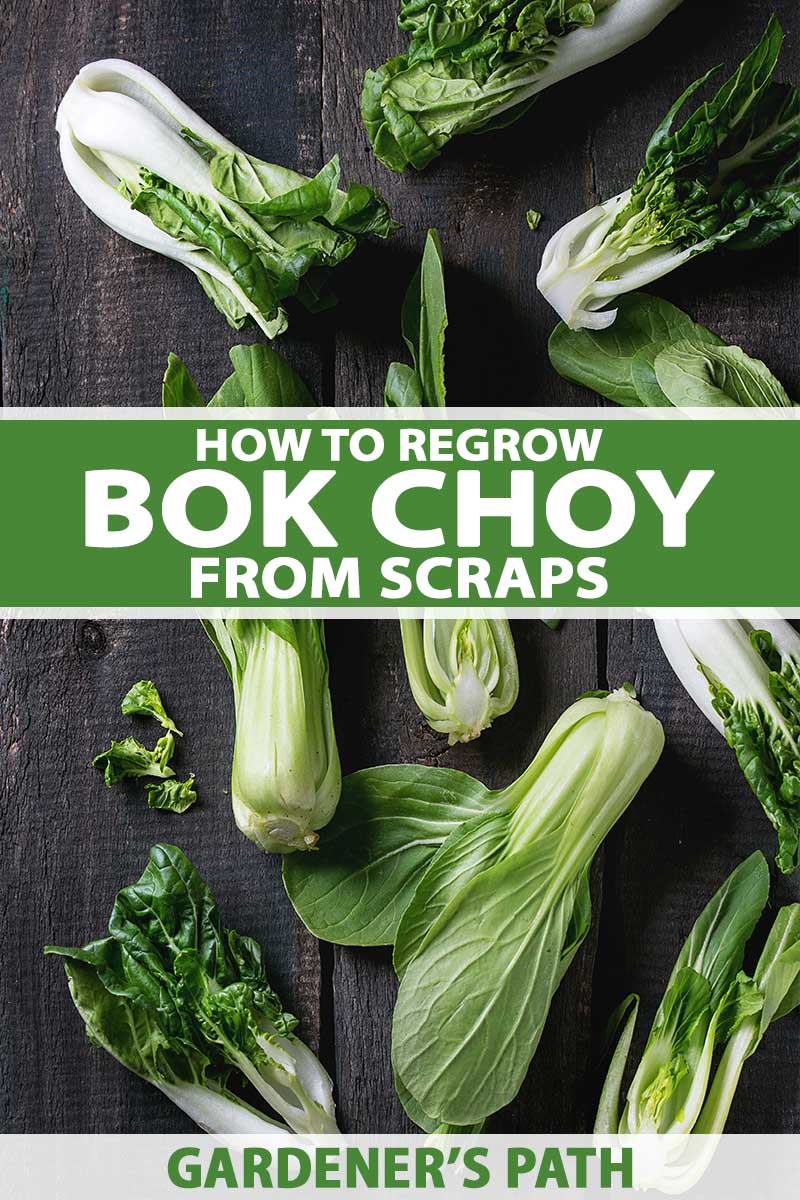
We link to vendors to help you find relevant products. If you buy from one of our links, we may earn a commission.
Continue reading to learn a simple and fun technique for regrowing bok choy from a cutting.
What You’ll Learn
Bok choy, also known as pak choi, is a quick-growing cruciferous veggie that is a staple ingredient in Chinese cuisine.
It is easy to grow, and thrives in cool weather. You can learn more about growing bok choy at home in our complete growing guide.
If you bought a bunch from the grocery store or farmers market you can easily repurpose the leftover stalk to grow your own!
Here’s how:
All You Need Is a Bowl of Water
First, when you remove the greens from the stalk, be sure to leave a couple of inches intact at the base. For best results, cut at the place where the stem meets the leaves.
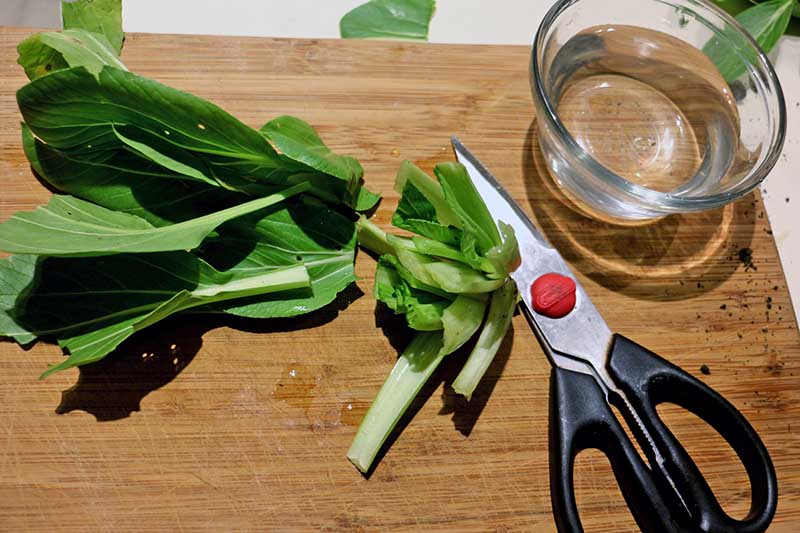
Next, fill a bowl with at least an inch or two of water. I find that a shallow bowl two to three inches deep works well.
Submerge the stalk in the water with the leaves face up and exposed to air. You can attach toothpicks around the outside of the base to prop it up on the edge of the bowl if you wish.
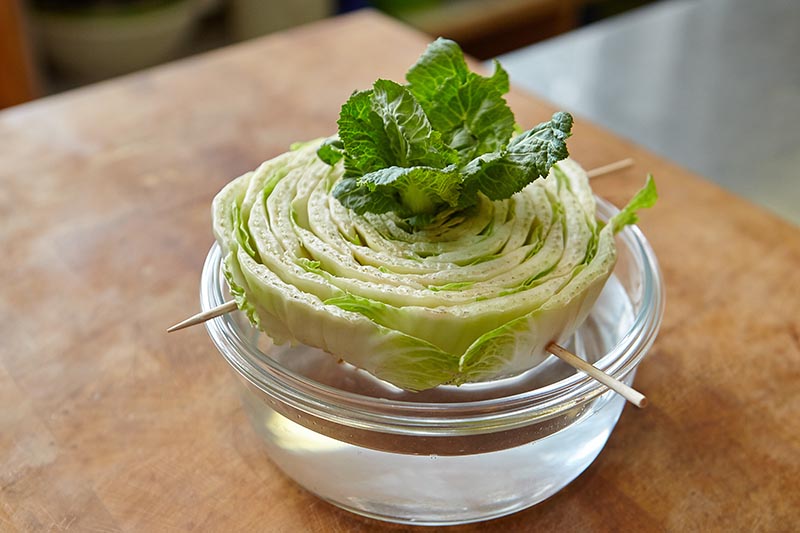
I have also had success using a narrow mouthed mason jar with the leaves hanging over the edge to keep the plant floating on the surface.
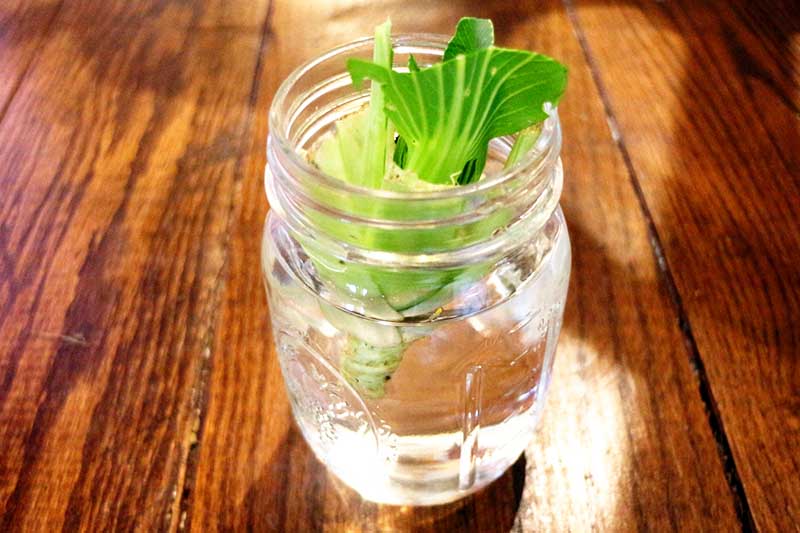
Place the bowl by a warm windowsill where the plant can receive some sunlight.
Change out the water every couple of days to keep it fresh.
Watch for Signs of Growth
After a few days, you will notice the outside of the plant starting to turn yellow. Soon, the center will start growing, becoming darker green over time.

You can lift the plant out of the water and inspect the underside for signs of root growth. You will first notice white bumps which is where the roots will sprout from, and after a week or so, roots will begin to appear.
Plant It in Some Soil
Once the center has developed new leafy growth and roots have appeared, you can choose to remove the bok choy from the water and plant it in a pot with some potting soil, or directly in the garden.
This step is not required, but doing so will give the plant the nutrients it needs to grow larger in size, and you may even be able to get two or three small harvests out of one plant.
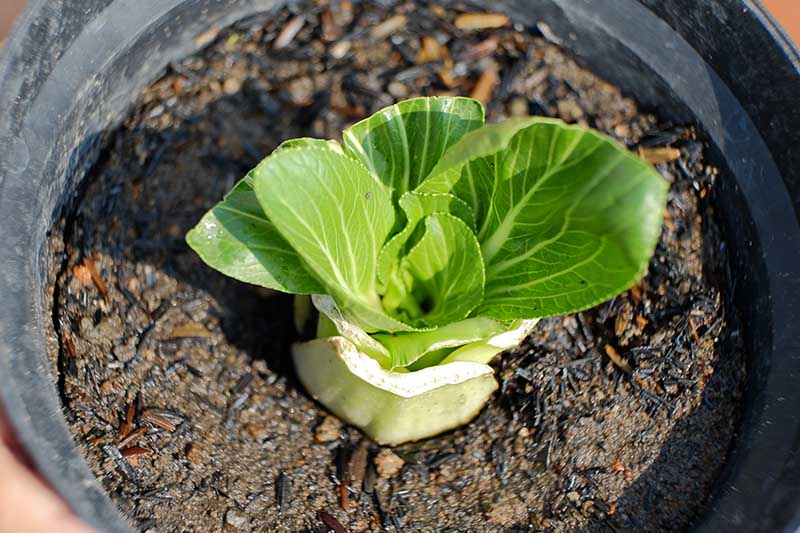
Start by removing some of the yellowing outer stalks to improve air circulation and reduce the risk of mold. Next, plant the bok choy so that the roots and base are buried about an inch deep, with the top of the original cutting and any new growth above the soil surface.
Water generously and keep moist, but do not let the soil become waterlogged.
Now sit back and watch it grow!
You can begin to harvest the leaves as you need them, or cut down the whole plant once it has matured, in two to three months.
Don’t Trash Those Scraps!
The next time you pick up a bunch of bok choy, instead of tossing out the scraps, why not try regrowing them instead?
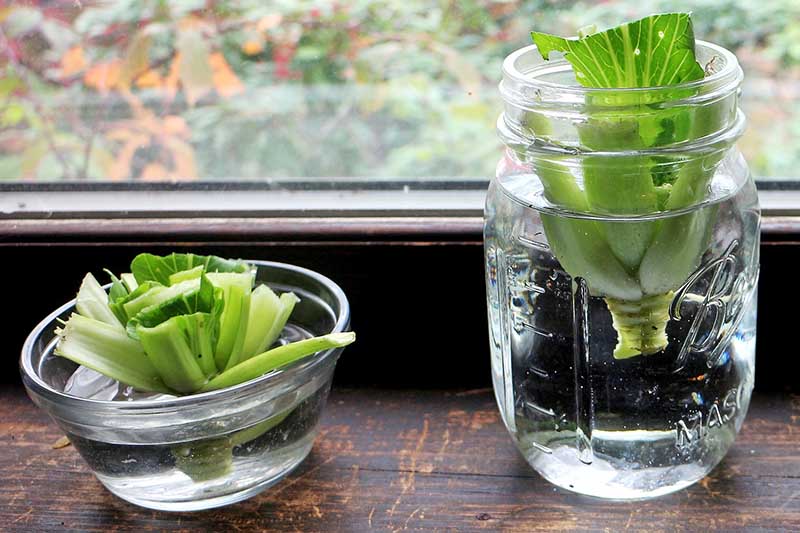
So simple and fun, there is really nothing to lose! Trust me, the whole family will enjoy watching those deep green leaves pop back up, seemingly like magic.
Have you ever regrown bok choy from a stalk? Share your experience in the comments below!
Did you know that you can grow lots of crops from scraps? You can learn more about other fruits and vegetables you can grow from kitchen remains in these guides:
- How to Regrow Lettuce from Scraps
- Growing Avocado Seeds: a Fun Project to Do with the Kids
- Grow Pineapple from Kitchen Scraps at Home
Photos by Heather Buckner © Ask the Experts, LLC. ALL RIGHTS RESERVED. See our TOS for more details. Uncredited photos: Shutterstock.
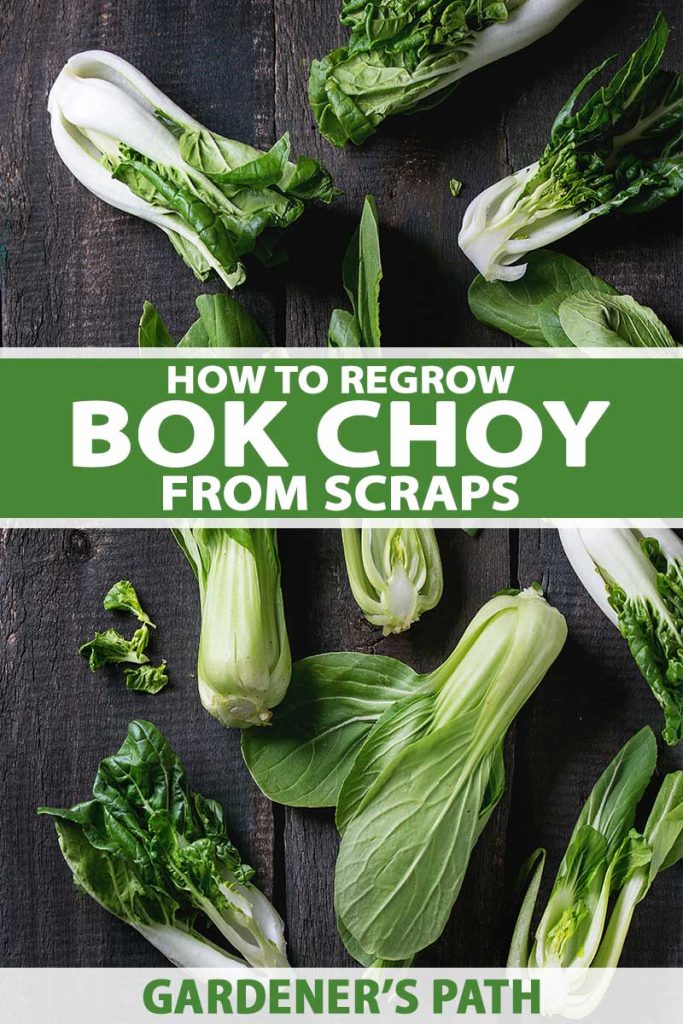
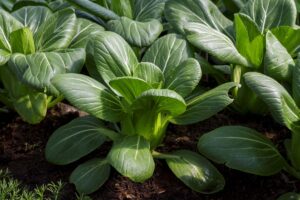


Yes! Just planted my propagated bok choy, it was amazing seeing the growth in 5-7 days.
Thanks for sharing Eva! I am glad this method worked for you.
Is it necessary to see root growth before planting in soil? My bok choy base has sprouted leaves from a few places, but it’s also rotting and starting to really stink! I’d love to get it in soil as soon as possible.
Hi Heather,
In my experience there need to be roots growing order for it to survive when transplanted in soil, but its certainly worth a shot! If the plant seems to be rotting, it is likely you may need to try again with a new head. Changing the water regularly will also help prevent rotting.
Hope that helps and good luck!
How do we prevent it from rotting? I see new growth in the middle but the sides rot fast, and in the end I had to throw the new baby growth away and the rotting has affected the inside 😭
Changing the water often and suspending the base so it just touches the surface of the water rather than submerging any part of the crown or stems are your best options to prevent mold. But cuttings of this type are prone to rotting.
When you plant it , does it require full sun?
Bok choy grows best in cooler temperatures. You can plant in the garden anytime during the growing season once nighttime temps are above 50°F. It is best in part shade, but can grow in fully sun. For more information about growing bok choy in the garden, you can check out our full grow guide.
Help. I’ve done the above steps and planted in a large pot. I don’t over water. My plants were looking good but are now wilting and dying. What can I do to save them?
Hi Michelle,
I am sorry to hear that your bok choy is wilting. Did you allow the roots to fully develop before you transferred the plant into a pot? Is the soil well draining? Does the pot have access to sunlight? Transplanting from water to soil can be tough on plants and unfortuately, sometimes they just don’t survive the move.
You could try removing them from the soil, cutting the leaves down to the base and setting them in water again to see if they grow. Good luck!
Hi, i tried to regrow bok choy cutting in water. After 3 days, some of the outer layers are soft and mushy, with some mould. What should i do? Should i peel the outer layer that are affected and continue putting it in the water? Thanks!
You may be able to peel away and discard the affected portions, but the best course of action would be to toss your cuttings and start over. Clean and sanitize the container, and change the water more frequently to inhibit mold growth.
I put my bok choy in water about a week ago and it grew one stock and it’s flowering. Is this little guy going to work?
Unfortunately, if your bok choy has gone to flower it is probably past the point of producing a head of leaves. You can eat the flowers, stems, and any small leaves that appear after it bolts, but don’t expect to get much of a meal out of it. If I were you I might just start fresh with a new plant.